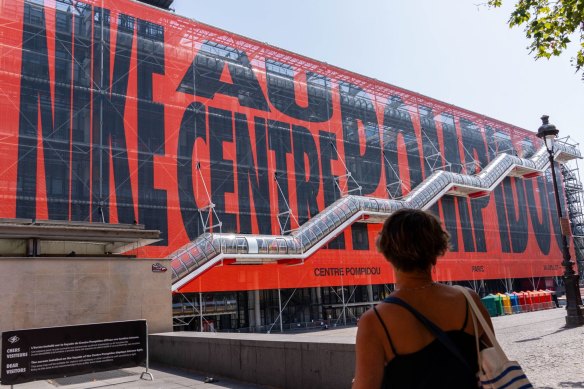
“If you look at New Balance, On Running, Adidas, they’re all in growth, whereas Nike has been losing market share.”
In September last year, Donahoe conceded it was struggling to connect with everyday runners. “We’re working hard to better connect with runners in their community,” he told investors in an earnings call. Last December, he announced a $US2 billion ($2.9 billion) cost-cutting exercise that laid off 1600 workers.
On June 28 this year, Nike surprised the market by slashing its revenue forecast to the mid-single digits, leading to its biggest stock price fall – 20 per cent – in history. Since the beginning of the year, Nike’s share price has fallen more than 16 per cent.
“The CEO of Nike doesn’t come from the industry. So, probably he underestimated consumer behaviour and the logic behind the marketplace mechanisms of the sport sneakers and apparel distribution. Or wasn’t aware of them,” wrote Massimo Giunco, a former senior brand director of Nike in Europe, in a lengthy LinkedIn post recently that picked apart Nike’s ailing strategy under Donahoe.
“At the end, he is a poorly advised ‘data-driven guy’.”
Despite the series of blunders that have impacted Nike’s position in the global market, the Australian market has been somewhat shielded from the US strategy of reducing its shelf space from local distributors and retailers, according to Rigby.
“We haven’t really seen that stuff play out in Australia,” he said. “They haven’t [pulled out of retailers] anywhere near as aggressively as what they’ve done it in the US.

A canvas on the facade of the Centre Pompidou during the 2024 Paris Olympic Games featuring Nike branding.Credit: Bloomberg
“We heard rumours that it would happen, but now that it’s been a bit of a disaster and backfired for them in the US, would it still happen in Australia or not, is probably still likely to be seen.”
Like most businesses, Nike Australia’s expenses climbed over the year; distribution costs rose from $69.7 million to $82.2 million and administration costs increased 9.2 per cent to $97.6 million.
In Australia, fashion retail has suffered from cost-of-living pressures that have made consumers reluctant to part with their money and more picky with discretionary purchases.
Many are trading down on everything from pub meals and groceries to luxury electronics and puffer jackets. Smiggle and Peter Alexander operator Premier Investments’s net profits fell 4.9 per cent in the 2024 financial year.
Consumers appear to be swapping higher-end, pricier fashion labels – such as Myer’s in-house brands sass & bide, Marcs and David Lawrence responsible for half of Myer’s 26 per cent profit drop – for more affordable alternatives and “dupes”, if Kmart’s 25 per cent earnings increase is anything to go by.
The new global chief executive, Hill, begins in the job on October 14. “The big challenge for them is: will they make Nike cool again?” said Rigby.
Nike Australia was contacted for comment.



























